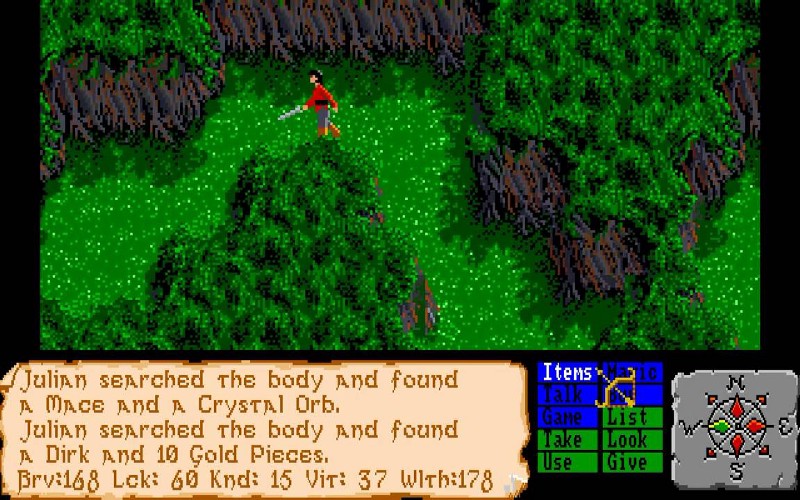
I enjoyed reading David Joiner's retrospective about game development in the early days of the Commodore Amiga: like many creators of the era, he not only had to cultivate his artwork, but also needed to devise incredible technical hacks just to get his ideas working on the frustratingly limited (yet wildly malleable) hardware.
Loading the data in the background was a challenge, and I could not figure how how to get the Amiga filesystem layer (AmigaDOS) to load data without pausing the program. So instead, I cheated: instead of writing out the terrain as files on disk, I wrote them directly to the floppy tracks as raw data blocks. I could then use the low-level floppy device driver to load the data in the background while the game was running.
This meant that when you put the Faery Tale disk into the computer and listed the files on it, all you would see was a few files needed to ‘bootstrap’ the game — most of the game content was hidden from view.
His game, Faery Tale Adventure, is an essential minor classic of the 16-bit era. It's offbeat and rough-edged compared to the technical tours de force that would define the Amiga when it had to compete with Japanese consoles, but has a dedicated fanbase to this day, because it has soul. One of the counterintuitive lessons that we can draw from Joiner's retrospective is that a lot of one-person indie game devs would benefit from not trying to do everything themselves. He had no choice when it came to code and design, whereas we now have Game Maker (or Phaser, or Unity...) and an internetful of skilled collaborators to make our dreams real.
He also made himself this incredible suit of science-fiction armor, around which an entire 1980s BBC TV series could be based...



